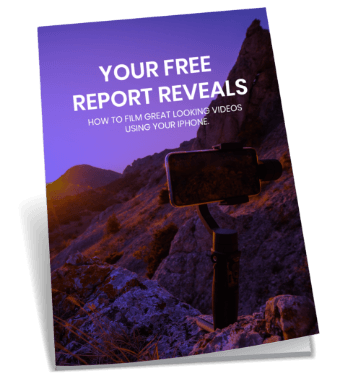Did you enjoy this video? Looking for the best promotional video production tip? Click here to get started.
Video Transcript: I’m going to start with the bottom one first. When you’re making these things, even though you might be in front of the camera, or even filming someone else, it’s not about you, it’s about the people, it’s about your audience. That’s a massive thing to think about. You also might be a bit intimidated or worried about, if you’re going to be doing a lot of what Dave does, standing in front of the camera and talking about things, it can be a little bit intimidating. It can be, well, I don’t feel like I’m that charismatic and I can’t present something as well. You can forget all that because it’s about you adding value to your client and sharing with them your information so they can benefit from it.
Again, it’s a story. A story is everything and everyone has a story to tell. That’s why my company is called Storylab. That is what I think our whole civilization is built on, from the time people were drawing on cave walls and grunting at each other. It was hey, I found some food, you should go find it over here. Or hey, there’s a saber tooth tiger down there, don’t go down there, or the story of how I survived it or something like that. It’s just evolved to the point now where it’s, I’ve got an iPhone4 and I want you to know the technical details of that. It’s still the same thing.
Now this is an important thing as well, it’s about showing and not telling. Again, I’ll use websites as an example. People just get on there and tell you everything they’ve ever done. It’s not about that. If you’ve got a product, show them how it works. If you want to make a tutorial about it, show them. It’s better to show everything. When I was at acting school, it was what they told us. Don’t go up there and tell me how good you are at something, show them how good you are at something.
Now we’re going to go into details about the actual types of scripts that you will go through and what to write and what to prepare. So Dave is going to talk about sales because he’s a bit of a gun.
David: Ok, so we’ll start of with video sales letters. For those of you who don’t know, that’s John Carlton who is a really well known copywriter. People talk about what is copywriting? When you think about the copy on your website, they call it salesmanship in print. So when I think about what video is, what is video? Video is salesmanship in video. It gives you the opportunity to bring the salesman back and have it in a very automated fashion.
The good thing about writing sales letters, people used to use direct mail and still do, you mail things out to clients to try and sell them on something and it’s salesmanship in print. The reason you did that is you could get your message out really quickly, rather than having to pick up the phone and call each client. That’s why that was effective, but now, with the introduction of video, it’s even better because now you can go back to having the salesmanship in video which is where we sell. That’s where you can incorporate stories.
As Ben said, I think stories are key. A lot of what I do, I like to start with a story, whenever we have a presentation and I’ll finish with a story as well. So at the end of the day, that will be another story that you’ll look forward to. I like to tell stories because stories are how people learn and it’s how they get hooked in and engaged. So if you can create an engaging story, then people start to listen and then you start to embed in what you’re trying to tell them as far as selling them. You use the story to hook them and draw them in, then you drop the nuggets of what it is that they need to know. It’s just like traditional copy.
Scripting is so important. I’ll script all of my videos out. I know Ed Dale, who Rob does a lot of work with, he’s a little bit different, he does a lot more work on the fly but he still has a process of things that he will cover.
I’m a little bit different. Some people need to script out the entire script as to what they’re going to say word for word and they need to rehearse it until it feels natural. Some people, once they really know the material inside and out, can use bullet points. So in my office, and we’ll show you some photos of my little video recording studio, we have a white board that is behind the camera and I think about what I’m going to talk about, then I bullet point down what it is that I’m going to cover. I have that written behind and as I sit there, I’ll read a bullet point, do a little bit.
Ben taught me a technique where, after I’ve covered a little bit, I just stop there for a second, catch my breath, do whatever I need to do and then I’ll continue. It makes editing really easy. Ben will go into that sort of thing for you.
When you watch my video, it feels like, wow, Dave is a one take wonder. He goes all the way through and it happens perfectly every time. But that video, that first one, that pod cast interviews video, and I said it as a little bit of a joke, I think one of the sections, I had to punch that out about fifty times or something like that before I got it. You don’t see that and it flows.
Sometimes you look at an Apple video, an Apple video looks so clean and simple. We had someone comment on this in one of our other workshops, they said, I just want something simple like the Apple video. What you don’t know is the whole system that goes on behind that video is incredibly intricate. They’ve got such a good system that it makes it look simple. Good sales are about making things look simple, even though a lot of thought has gone into it.
Telling a good story is a top promotional video production tip you should follow. Want professional help with your own video marketing? Click here to contact us.





